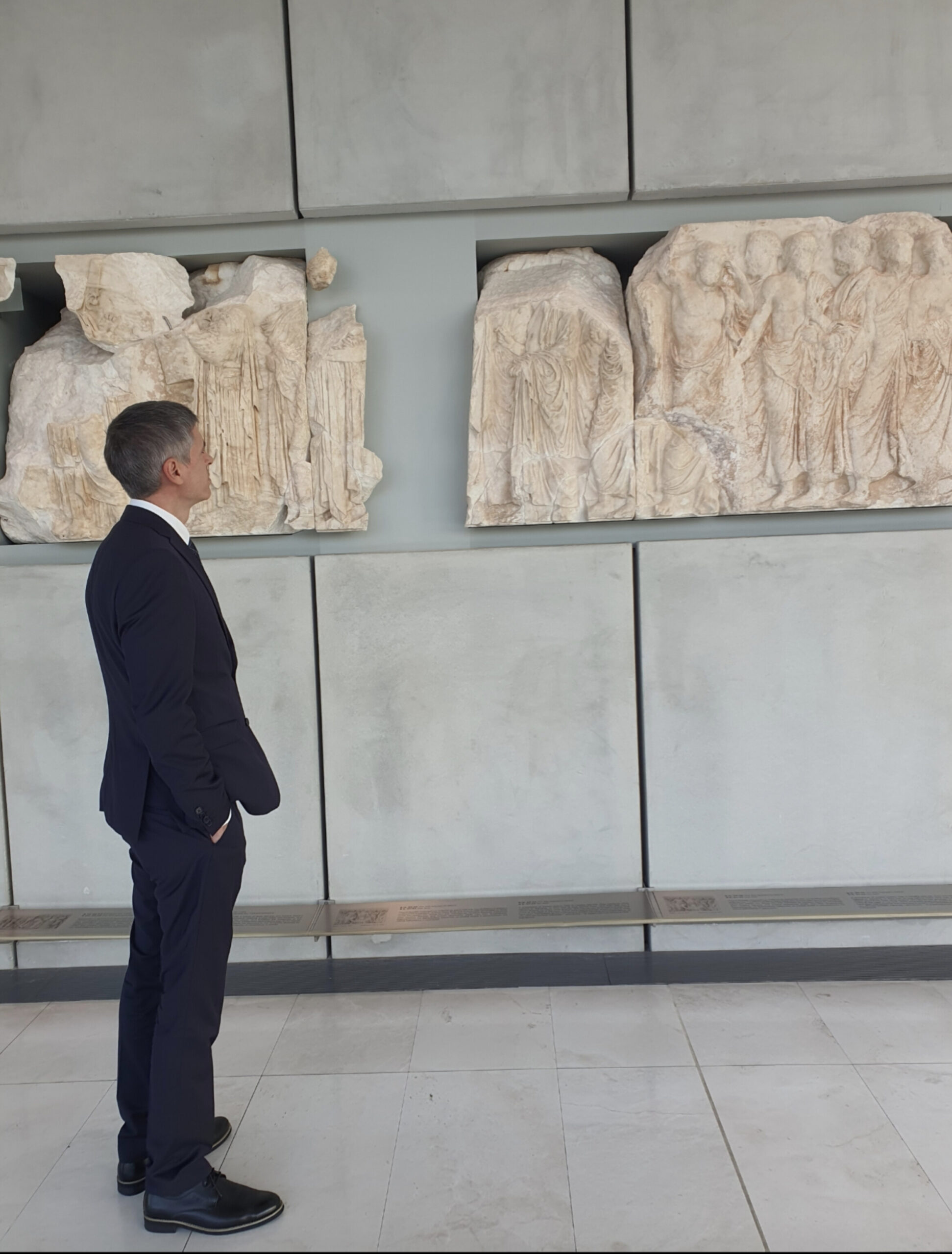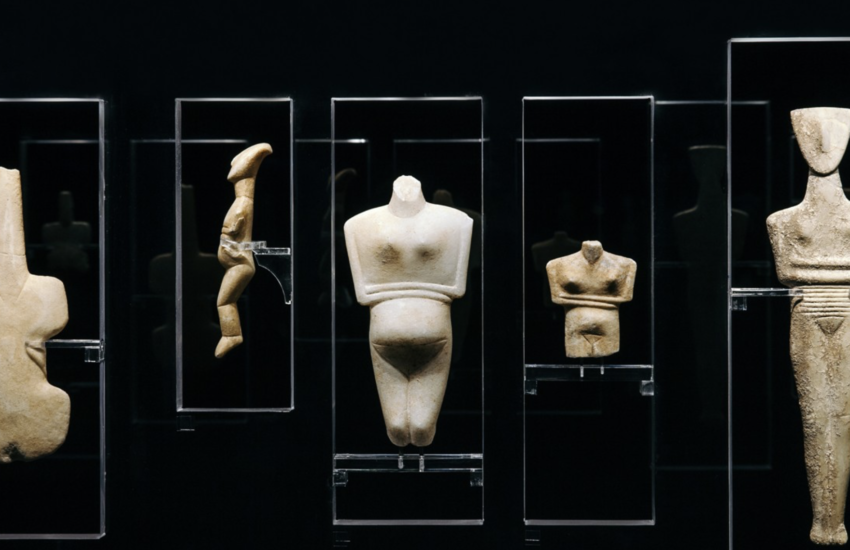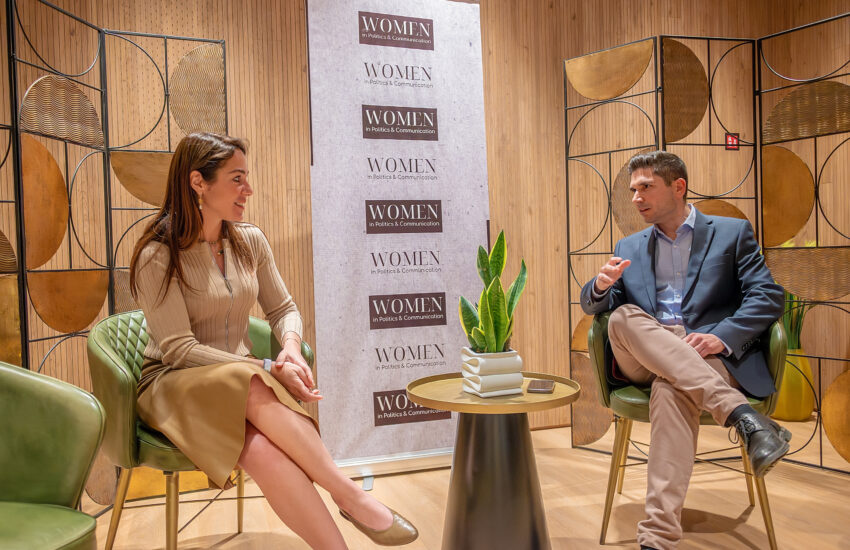Austrian Committee and the two Parthenon fragments from the Kunsthistorisches Museum in Vienna
Και η απάντηση είναι: ΝΑΙ!
Αυτή είναι η στιγμή που όλοι περιμέναμε εδώ στην Αυστρία! Η στιγμή της επιστροφής των δύο θραυσμάτων του Παρθενώνα από τη Βιέννη και το Kunsthistorisches Museum πίσω στην Ελλάδα και το Μουσείο της Ακρόπολης.
Θα ήθελα να ξεκινήσω αυτό το άρθρο συγχαίροντας τον Υπουργό Εξωτερικών της Αυστρίας, κύριο Alexander Schallenberg και τον Υπουργό Εξωτερικών της Ελλάδας, κύριο Νίκο Δένδια.
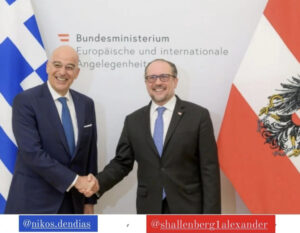
Θα ήθελα επίσης να συγχαρώ το Kunsthistorisches Museum και το Μουσείο της Ακρόπολης, καθώς και όλους όσους εργάστηκαν και στις δύο χώρες για την επανένωση αυτών των θραυσμάτων.
Συγχαρητήρια στην Πρεσβεία της Ελλάδας στη Βιέννη για τη βοήθεια και την εξαιρετική δουλειά που κάνουν. Insbesondere möchten wir uns für die außergewöhnlich gute Zu- sammenarbeit mit Ihnen bedanken!
Και θα ήθελα να αναφερθώ ιδιαίτερα σε μια γυναίκα που θεωρώ πως με το έργο της και όλα τα επιτεύγματά της μέχρι σήμερα εδώ, στη Βιέννη, έχει αναγνωριστεί και χαρακτηρισθεί ως εξαίρετη πρέσβης, την κυρία Αικατερίνη Κόικα.
Πριν από περίπου δύο χρόνια άρχισαν οι διαπραγματεύσεις. Πριν από δύο χρόνια, o COVID κατέστειλε όλες τις προσπάθειες. Σήμερα, η Αυστρία και η Ελλάδα ξεκινούν ένα νέο κεφάλαιο, γράφουν μαζί μια ιστορία προόδου, μια ιστορία δημοκρατίας που παραμένει αδιάσπαστη, μια ιστορία επανένωσης.
Μας έλεγαν και ακούγαμε συχνά ότι η Αυστρία και το Kunsthistorisches Museum δε θα συμφωνούσαν ποτέ, σε καμία περίπτωση και υπό οποιεσδήποτε συνθήκες, να επιστρέψουν τα δύο θραύσματα του Παρθενώνα.
Αλλά τα τελευταία δύο χρόνια, αποδείξαμε ότι οι κυνικολόγοι και οι κακόβουλοι έκαναν λάθος.
Η Αυστρία και η Ελλάδα συνασπίσθηκαν, για να φέρουν εις πέρας μία συμφωνία που συμβαίνει για πρώτη φορά στη σύγχρονη ιστορία, χτίζοντας γέφυρες που ενώνουν τον ευρωπαϊκό πολιτισμό και τους λαούς του.
Σήμερα, λοιπόν, ακούμε με ιδιαίτερη χαρά τα νέα για τις συνομιλίες μεταξύ της Αυστρίας και της Ελλάδας, συνομιλίες που αφορούν τον κοινό μας πολιτισμό, την κοινή μας ευρωπαϊκή ιστορία και την Τέχνη που τόσο αγαπάμε. Άλλωστε το 1857, με αυτοκρατορικό διάταγμα, ο ίδιος ο αυτοκράτορας Franz Joseph, ενέκρινε την ανέγερση του αυστριακού κοινοβουλίου, ένα κτίριο σχεδιασμένο στο στυλ ιστορισμού (Historismus Stil), από τον αρχιτέκτονα Theophil von Hansen, ο οποίος μιμήθηκε το σχέδιο του ναού του Παρθενώνα, με την πεποίθηση ότι η μορφή διακυβέρνησης της κλασικής Αθήνας είχε γεννήσει την πιο αληθινή μορφή δημοκρατίας.
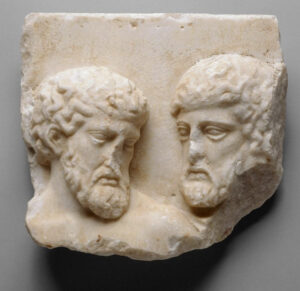
Τα δύο αυτά πανέμορφα θραύσματα του Παρθενώνα, τα εντυπωσιακά αυτά τεχνουργήματα, που σήμερα βρίσκονται στο Μουσείο Ιστορίας Τέχνης στη Βιέννη, εικάζεται ότι απέσπασε από το χώρο της Ακρόπολης Ενετός αξιωματούχος, μετά το βομβαρδισμό του μνημείου από τον Morosini, το 1687, ο οποίος μετέφερε τα θραύσματα στην πατρίδα του ως πολεμικά ενθυμήματα εκείνης της περιόδου.
Το πρώτο θραύσμα ανήκει στο λίθο ΙΧ της βόρειας ζωφόρου και απεικονίζει τις κεφαλές δύο ανδρικών μορφών. Πρόκειται για γενειοφόρους άνδρες με κοντά σγουρά μαλλιά και έντονα ζυγωματικά, που προδίδουν την ώριμη ηλικία των μορφών. Στο λίθο ΙΧ απεικονίζεται πομπή πρεσβυτέρων, στην οποία γενειοφόροι άνδρες, ντυμένοι με ιμάτια, στέκονται κατενώπιον ή πλαγίως. Οι πρεσβύτεροι ταυτίζονται με τους θαλλοφόρους , οι οποίοι συμμετείχαν στην ιερή πομπή των Παναθηναίων, κρατώντας ιερά κλαδιά ελιάς.
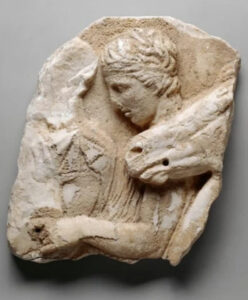
Το δεύτερο θραύσμα προέρχεται από το άνω αριστερό τμήμα του λίθου ΧΧΧV της βόρειας ζωφόρου. Στο συγκεκριμένο τμήμα της ζωφόρου οι ιππείς προχωρούν σε στοίχους ανά επτά, επικαλύπτοντας ο ένας τον άλλον. Το ανάγλυφο είναι χαμηλό, χωρίς ωστόσο να χάνεται η έννοια του βάθους. Στο θραύσμα απεικονίζεται η κεφαλή και το μέρος του κορμού του ιππέα, καθώς και το πρόσθιο τμήμα της κεφαλής ίππου, που βρίσκεται δίπλα στον αριστερό ώμο.
Ο ιππέας είναι νέος, με κοντά κυματιστά μαλλιά και σοβαρό πρόσωπο. Η κλίση της κεφαλής του ίππου προς τα κάτω δηλώνει την ένταση που προέρχεται από τον καλπασμό του. Στο θραύσμα διακρίνονται οπές για την προσάρτηση των ηνίων.[1]
Παρά τα ευχάριστα νέα, δεν πρέπει να ξεχνάμε: το ημιτελές και μεγάλο έργο που απομένει μπροστά μας, να φέρουμε πίσω όλα τα Γλυπτά του Παρθενώνα. Η αυτοπεποίθηση και το θάρρος είναι τα βασικά στοιχεία της επιτυχίας στην υλοποίηση του σκοπού μας. Πρέπει να έχουμε πίστη. Δεν πρέπει να επηρεαστούμε από φημολογίες ή αυθαίρετες εκτιμήσεις. Είναι στο χέρι μας να υποστηρίξουμε αυτόν τον σκοπό και να τον κάνουμε να πετύχει.
Μαζί, δε μπορούμε να αποτύχουμε.
Mag. Alexandra Pistofidou
Präsidentin und Gründerin Österreichisches Kommitte für die Rückgabe der Parthenon Skulpturen
(1) Source, Hellenic Ministry of Culture and Sports, “Fragments of the Parthenon Sculptures displayed in Museums Across Europe, (with the exception of the British Museum and the Acropolis Museum)”, by Elena Korka, General Director of Antiquities and Cultural Heritage., Athens 2017, Lychnia A.E.
Article in English:
Austrian Committee and the two Parthenon fragments from the Kunsthistorisches Museum in Vienna
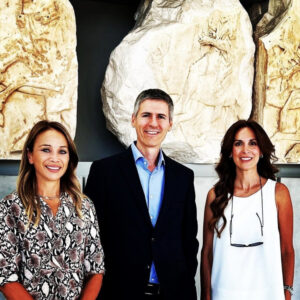
Und die Antwort ist : YES!
This is the moment we were all waiting here in Austria! The moment of the return of the two Parthenon Fragments from Vienna and the Kunsthistorisches Museum back to Greece and the Acropolis Museum.
I would like to start this article by congratulating the Minister of Foreign Affairs of Austria, Alexander Schallenberg and the Minister of Foreign Affairs of Greece, Nikos Dendias.
I would like also to congratulate the Kunsthistorisches Museum and the Acropolis Museum, and all those that have been working in both countries for the reunification of these fragments.
Congratulations to the Embassy of Greece in Vienna for helping out and for their excellent job. Insbesondere möchten wir uns für die außergewöhnlich gute Zu- sammenarbeit mit Ihnen bedanken!
And I would like to give special recognition to a woman who I think is considered a great embassador, for all her achievements so far here in Vienna, Mrs Aikaterini Koika.
Two years ago, the negotiations started. Two years ago, COVID shut down all efforts. Today, Austria and Greece are writing a new chapter, a story of progress, a story of democracy that remains unbroken, a story of reunification.
We were often told that Austria and the Kunsthistorisches Museum would never agree, under no circumstances, to return the two Parthenon fragments.
But over these past two years, we proved the cynics and the naysayers wrong.
Austria and Greece came together, to pass a once-in-a-generation agreement, building bridges to connect European culture and its people.
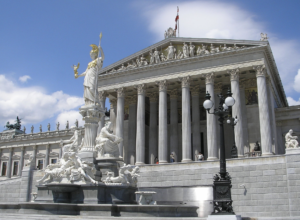
So today we are delighted to hear the news concerning the talks between Austria and Greece, talks for our common culture, for our common European history, and for the Art we love. Afterall back in 1857, with an imperial decree, Emperor Franz Joseph, himself, gave the go ahead for the construction of the Austrian Parliament, a building designed in the Historistic style (Historismus Stil), by the architect Theophil von Hansen, who imitated the design of the Parthenon temple, in the belief that the form of government in classical Athens had given birth to the truest form of democracy.
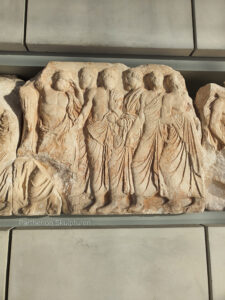
These two beautiful Parthenon fragments, these amazing artefacts, were purportedly removed from the Acropolis by a Venetian dignitary in the aftermath of the bombardment of the Parthenon by Morosini, in 1687, who carried home the fragments as war-souvenirs at that time.
The first fragment belongs to Slab IX of the North Frieze and depicts the heads of two male figures, who are portrayed as bearded men, with sort curly hair and pronounced cheekbones that reveal their mature age. Slab IX displays a procession of bearded elders shown standing, clad in himmatia, facing forward or in profile. The elderly men are identified with the “Thallophoroi”, who participated in the sacred procession holding olive branches.
The second fragment comes from the upper left part of Slab XXXV the North Frieze. This section of the frieze depicts horsemen riding in rows of seven, overlapping each other. Even though the relief is low the impression of depth is not diminished. The fragment depicts the head and torso of a horseman as also the front part of the head of the horse that lies next to the rider’s left shoulder. The horseman is portrayed as a young man with short undulating hair and solemn face. The horse lowers its head in a posture that further accentuates the intensity of the gallop. Holes which are preserved on the fragment, were intended for attaching reins!
Despite the good news, we should not forget: the unfinished and great task, remaining before us, to bring back all the Parthenon Sculptures. Confidence and courage are the essentials of success in carrying out our plan. We must have faith. We must not be stampeded by rumors or guesses. It is up to us to support this cause and make it work. Together, we cannot fail.
Mag. Alexandra Pistofidou
Präsidentin und Gründerin Österreichisches Kommitte für die Rückgabe der Parthenon Skulpturen
[1] Source, Hellenic Ministry of Culture and Sports, “ Fragments of the Parthenon Sculptures displayed in Museums Across Europe, (with the exception of the British Museum and the Acropolis Museum), by Elena Korka, General Director of Antiquities and Cultural Heritage.

